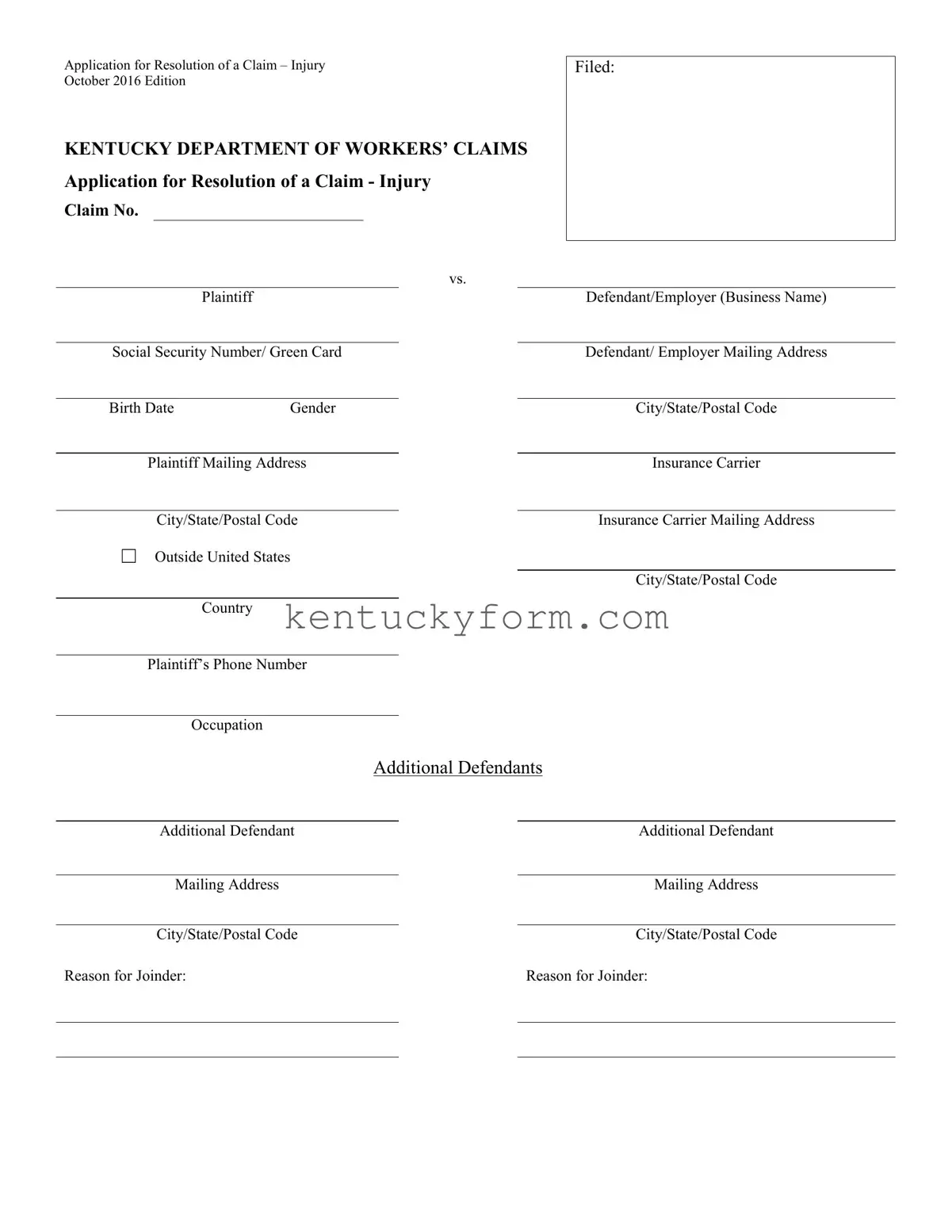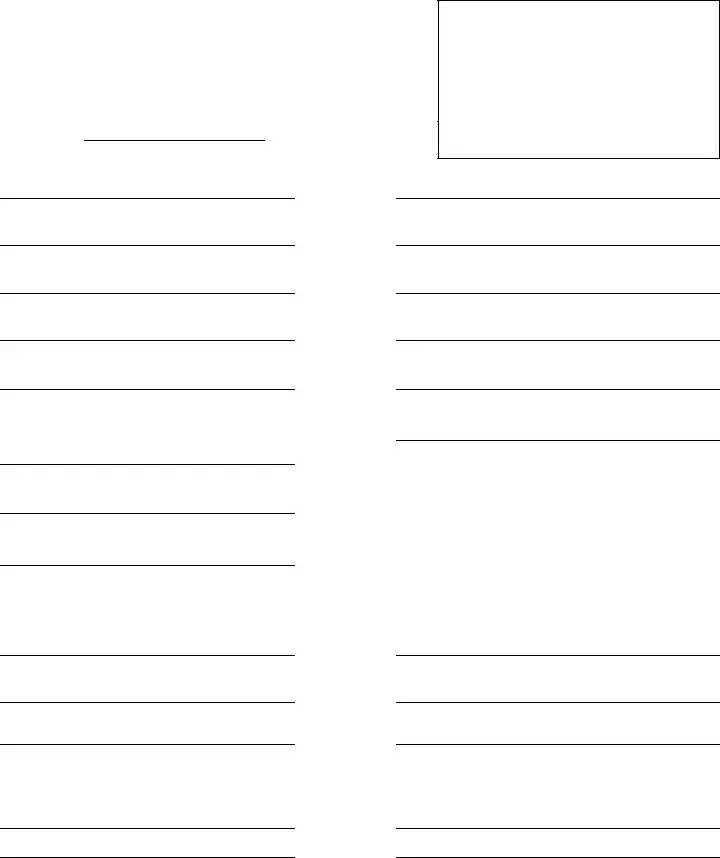Application for Resolution of a Claim – Injury
October 2016 Edition
KENTUCKY DEPARTMENT OF WORKERS’ CLAIMS
Application for Resolution of a Claim - Injury
Claim No.
vs.
Plaintiff
Social Security Number/ Green Card
Birth DateGender
Plaintiff Mailing Address
City/State/Postal Code
☐Outside United States
Country
Plaintiff’s Phone Number
Occupation
Filed:
Defendant/Employer (Business Name)
Defendant/ Employer Mailing Address
City/State/Postal Code
Insurance Carrier
Insurance Carrier Mailing Address
City/State/Postal Code
Additional Defendant
Mailing Address
City/State/Postal Code
Reason for Joinder:
Additional Defendant
Mailing Address
City/State/Postal Code
Reason for Joinder:
I. Nature of Injury
1.Date and location of accident/injury:
Date of Injury |
Location of Injury (City/State/Postal Code) |
☐Plaintiff states that he/she was injured within the scope and course of employment with defendant employer on the above date at the above location.
2.Describe how the accident/injury occurred:
Cause of Injury:
3.Body part injured:
4.When and by what means did the plaintiff give notice of injury to the employer?
5.Describe medical treatment, if any:
6.Name and address (city/state/postal code) of physician whose report will be provided:
7.Will an interpreter be needed for the formal hearing? (Yes / No) If yes, in which language?
8.Dependents
Injured worker is deceased? (Yes / No)
If deceased, dependent information is required for a deceased worker. If work injury resulted in the death of claimant, attach/provide/upload Form F in addition to the application for Resolution of Claim.
9.Have you previously filed for or received workers’ compensation benefits in Kentucky? (Yes / No) If yes, please provide the following information:
Claim Number |
Date of Injury |
Nature of Injury/Disease |
Awards/Benefits |
|
|
|
|
|
|
|
|
|
|
|
|
If not a Kentucky claim, please provide the state in which you were awarded benefits:
10.Was there concurrent employment at the time of injury? (Yes / No)
11.Name and address of concurrent employer:
Concurrent Employer Name
Concurrent Employer City
Concurrent Employer State |
Postal Code |
12.Has the plaintiff worked since the injury? (Yes / No)
13.Name and address of current employer and description of job currently being performed: Current Employer Name
Current Employer City
Current Employer State |
|
Postal Code |
Description of Job Performed:
14.Are you alleging a violation of a safety rule/regulation pursuant to KRS 342.165? (Yes / No) If yes, submit form SVC within 15 days after filing the Application for Resolution of Claim.
Attestations:
I understand that any person who knowingly and with intent to defraud any insurance company or other person files a
☐statement or claim containing any materially false information or conceals, for the purpose of misleading, information concerning any fact material thereto commits a fraudulent insurance act, which is a crime.
☐Plaintiff herein being duly sworn, states that the statements in this application and in Form 104, 105, and 106 to be separately filed, are true.
By entering your name below, you are confirming the accuracy of this form to the best of your knowledge.
This form prepared and submitted by |
|
Relationship to injured worker |
|
|
|
Submitter Phone Number |
|
Submitter Email Address |
|
|
|
Plaintiff Signature |
|
|
Instructions for Completion of – Application for Resolution of a Claim – Injury
1.All sections of this form must be completed, and the following shall be filed within 15 days:
a.Form 104 (Plaintiff’s Employment History)
b.Form 105 (Plaintiff’s Chronological Medical History)
c.Form 106 (Medical Waiver and Consent)
d.Medical report describing and supporting the injury which is the basis of the claim.
e.Proof of Wages, including W-2’s, paycheck stubs, etc.
2.All information must be typewritten
3.File the original of this form and sufficient copies for all named defendants with the Department of Workers’ Claims, Prevention Park, 657 Chamberlin Avenue, Frankfort, Kentucky, 40601.
4.If you have no telephone number, please list a number at which you may be contacted.
5.If you have questions, call 1-800-554-8601.
Note: Special attention should be given to stating the correct name and address of the employer and insurance carrier. Otherwise, claim processing may be delayed.



